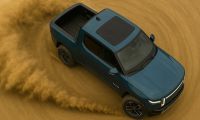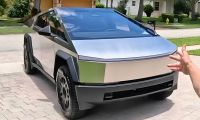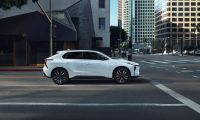Having now tested multiple vehicles with forward crash prevention (FCP), and after completing extensive research on the technology, I’ve decided that any future vehicle I buy will have this important and affordable technology.
I’m an enthusiast and love to drive. Knowing the systems and their capabilities I find no conflict at all between being a car nut and wanting such technology to become widespread. I have testing it myself, and read first-hand accounts by owners of vehicles in which the system took action to prevent a crash. My conclusion is that those who oppose the technology have an opinion that is based in truth, but which is no longer really valid.
How Does Forward Crash Prevention Work?
FCP works by using radar, cameras, or other technology to constantly scan the road conditions ahead. If the system determines that a forward crash is imminent, it takes a number of steps aimed at making the day go better for all involved. None of the systems on the market right now are designed to prevent all crashes. All of them can stop a crash in certain scenarios. The real aim is to do the best it can to first prevent the crash, but equally important, reduce the severity of the crash in terms of injuries and vehicle damage.
What Does Forward Crash Prevention Do?
If the system sees that a crash is about to take place it will do many things in sequence such as:
- Tighten the seatbelts
- Prepare the brakes to go to full stopping power
- Alert the driver with visual, audible, and haptic warnings (haptic means it vibrates the wheel or seat)
If the system determines a crash will happen it will take additional steps such as:
- Applying some brake force
- Retarding engine power (in the same way traction control does)
- Applying full braking power if necessary
Presently, systems marketed in the US do not steer the vehicle around pedestrians or vehicles in the path ahead, though those systems do exist. Manufacturers are rolling this technology out slowly and methodically to allow the public, and lawmakers to adapt to the new systems’ capabilities.
Resistance to Driver Aids
While I understand the argument from those that feel these systems are unnecessary (just pay attention!) the fact remains that one of my earliest memories of a car is being rear-ended. Not because the crash was a big deal, but because my father came danger-close to beating the young driver that caused the accident to a pulp. It is important to remember that the best safety system to protect you and your family may be in the car behind you. Since that time I have luckily never caused a rear-ending, but I have been in cars hit from behind about six times that I can recount. I also know that an accident I was in once, in which a driver coming the other way crossed the centerline to hit me head-on, would have been less severe if either or both our cars had this technology.
System Evolution
Although these systems began on some (not all) expensive luxury cars, it is now available on most family cars. I just tested a Honda 2015 CRV with the system, and I could feel its affects in some situations (pre-accident preparations). The systems are also adjustable and in many cars can be turned off. The CRV I was in had an MSRP of $33k. Cost is no longer a real issue.
Commenting on how much data and research goes into tuning the systems, Fords Driver Assist Technologies manager Scott Lindstrom said “… real-world testing was an important part of the development, because pedestrians in an urban setting can present a wide range of potential situations. We covered more than 300,000 miles on three continents that included a wide range of settings and situations.”
Even Tesla, long the only luxury car maker without this technology, has now seen the light and promised to add it as soon as practical to future vehicles. I don’t expect to ever spend the amount of money on a car required to take home a new Tesla Model S. However, I can afford a CRV, and after looking into this technology closely, I’m planning to only buy cars with it in the future. Maybe I will keep my perfect record with its help.
Related Stories:
Deaths in Tesla Model S crash might have been prevented by common safety system
How aluminum trucks like the Ford F-150 and forward crash prevention systems may save your life
Lexus IS outscores rivals on IIHS Front Crash Prevention test












Comments
Big problem: Radar/laser
Permalink
Big problem: Radar/laser based safety systems interfere with radar detectors. I'm not interested in supporting roadside tax collection.
So buy a Subaru. Their
Permalink
In reply to Big problem: Radar/laser by Mark Day (not verified)
So buy a Subaru. Their Eyesight system uses cameras instead - and is the best system out there (as per IIHS), beating everyone else.
Either way, your comment itself is (not to get personal) the same knee-jerk reaction that John was talking about. You're making a comment that isn't supported by what the actual devices are designed to do. In the 36 years since I got my license, I've also been involved in 6 rear-end collisions - one where I hit someone else (because, honestly, I was distracted), and 5 times I've been hit in the rear by OTHER drivers that were distracted (one of which was serious enough to send me to the hospital). My son was involved in a rear-end collision where totaled both cars - simply because he was didn't see the stop light and was still traveling highway speed when he rear-ended a Volvo. My wife was in a rear-end collision and nearly killed when someone hit her car in the same situation as my son - and there was cross traffic that then just destroyed her car. (The police officer actually was afraid to go up to her car, because he figured she'd been killed. Fortunately not.)
So big problem? Really?